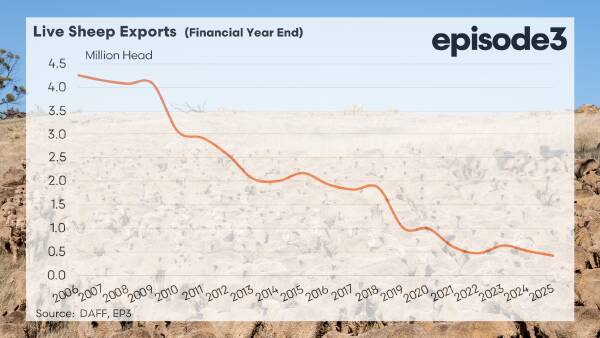
The live sheep export industry is experiencing a significant decline as global markets contract, creating an uncertain future for its stakeholders. As of 2023, countries like Australia, which have traditionally relied on this trade, face mounting challenges due to decreasing demand, leading to a precarious situation for producers.
Market Pressures and Regulatory Challenges
The decline in live sheep exports has been attributed to a combination of market pressures and changing consumer preferences. Key destinations, such as the Middle East and the European Union, are tightening regulations regarding animal welfare. These changes have raised concerns among exporters about the viability of their operations. In Australia, the live sheep export trade has witnessed a marked decrease; in 2022, exports fell to approximately 1.5 million sheep, down from around 2.5 million in 2020.
In response to these challenges, the Australian government has implemented stricter regulations aimed at improving animal welfare during transport. While these measures have garnered support from animal rights groups, they have also contributed to increasing costs for exporters. According to the Australian Bureau of Agricultural and Resource Economics and Sciences (ABARES), the compliance costs associated with these regulations have risen by over 30% since 2021.
Shifting Consumer Preferences and Economic Impact
Consumer preferences are also evolving, with many buyers opting for locally sourced meat products. This shift is particularly pronounced in regions where livestock farming is prevalent. The trend away from live exports is influencing market dynamics, leading to a drop in prices for live sheep. Industry insiders report that the average price for sheep has decreased by nearly 15% in the past year alone.
The ramifications of these changes extend beyond the exporters to farmers and local economies reliant on the live sheep trade. Many farmers are now facing financial difficulties as sales diminish. The Australian sheep industry, which has historically been a significant contributor to the national economy, is grappling with the reality of a diminishing market.
Efforts to adapt to this changing landscape are ongoing. Some producers are exploring alternative avenues, such as value-added products or shifts to sheep meat exports rather than live animals. Others are advocating for policy reforms that could help revitalize the industry.
Overall, the live sheep export industry stands at a crossroads. The convergence of regulatory pressures, shifting consumer preferences, and economic challenges has created an environment fraught with uncertainty. As markets continue to evolve, stakeholders will need to navigate these changes thoughtfully to secure a sustainable future for their businesses.






